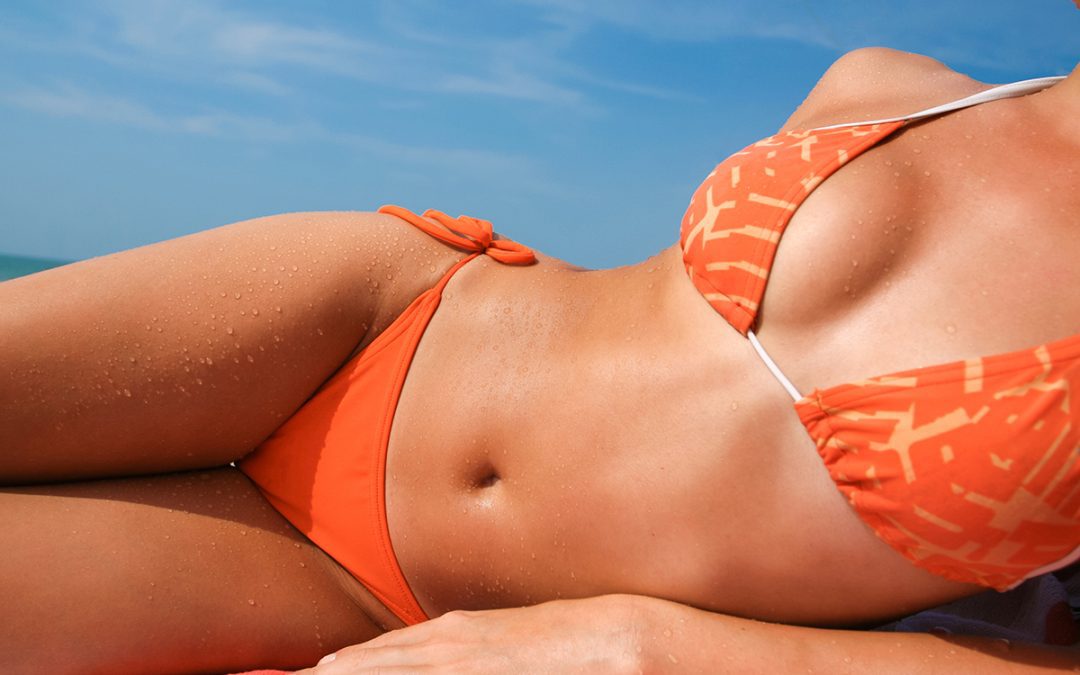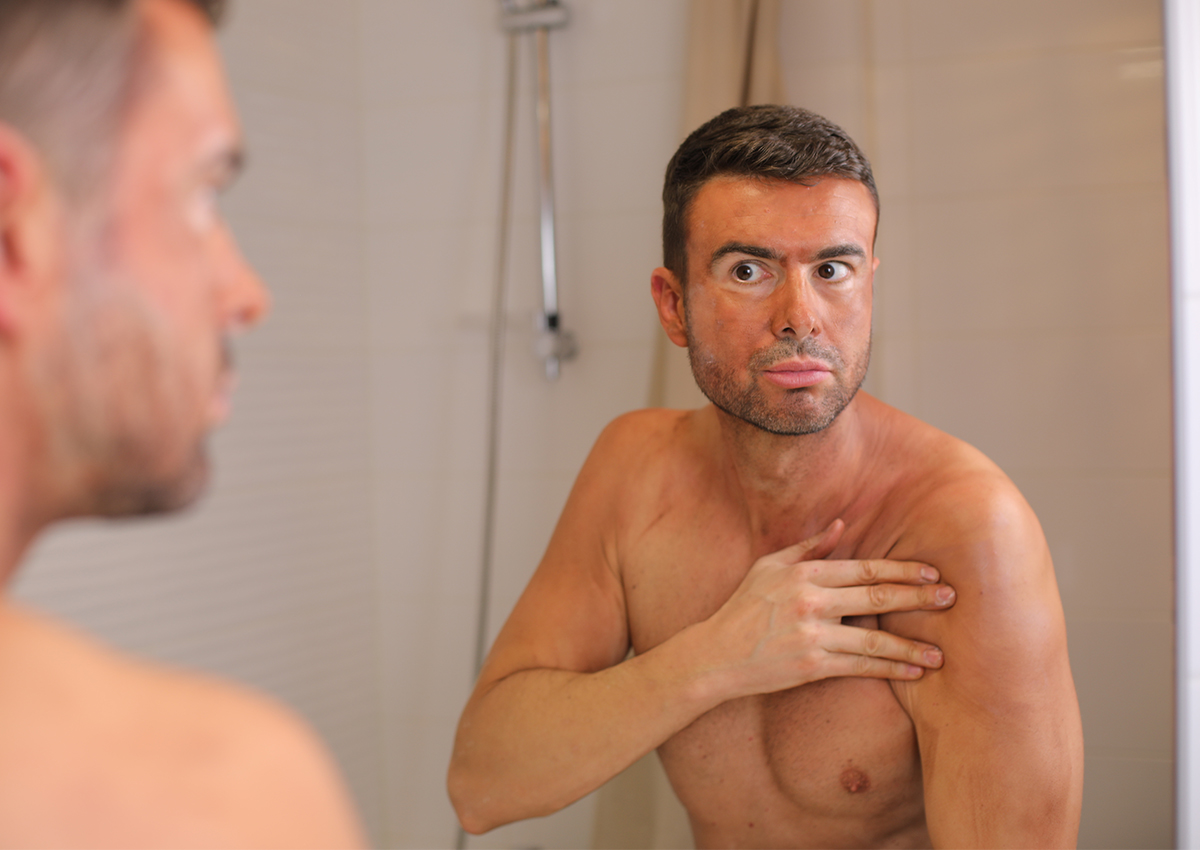Not all tans are created equally. Achieving a summery glow without stepping into the sun can be a tricky endeavour, especially when it sometimes results in the dreaded orange fake tan. Understanding why this happens and how to avoid it is crucial for anyone seeking a natural-looking and attractive appearance. Here’s your ultimate guide to steering clear of an orange fake tan, brought to you by Quicktan’s bronzing specialists.
Why is my tan orange? 3 must-know reasons
Picture this: tomorrow is your birthday night out and all of your friends are going to be there, some with instant cameras in hand. You want to look your best so you book a last-minute tan with your nearby technician… but things are rushed, and you neglect to shower as early as you really should. The next day swings around and your skin is looking decidedly orange…
No one wants that scenario, and in an ideal world, it would never happen. So before diving into the tips for achieving a natural-looking tan, it’s essential to understand why your tan might turn orange in the first place. Fake tans shouldn’t look orange, but sometimes they can do depending on the preparation that goes into readying your skin, the formula used and how it is applied.
Let’s dive into the 3 factors that can contribute to this less-than-desirable outcome.
1) Poor quality ingredients
With a burgeoning market for self-tanning products, comes the unfortunate difficulty in finding the most effective options. One of the reasons self-tanners may end up with a fake, orange-looking tan is when you have selected a product with low-grade ingredients.
Cheap, poorly made self-tanning formulas will leave users dissatisfied with the results at best, and frustrated with a blotchy, streaked finish at worst. Thus, it’s a good idea to do your research before purchasing.
2) Overdevelopment
Another key reason why you might be suffering from an orange fake tan could be down to the overdevelopment of a self-tanning product. By this, we mean that the formula has been left on your skin for longer than advised, allowing for the chemical reaction to go on for too long and process into a deeper colour than intended. This mistake partly ties into the previous one for reasons we’re about to explain.
Self-tanning products rely on a chemical called dihydroxyacetone (or DHA for short), which is a compound used to induce pigmentation. Essentially, it reacts with the amino acids in your skin along with the oxygen in the air to create the golden, brown shade we all love. Low-grade products might have inconsistent levels of DHA, so it’s always worth checking reviews and reading the label.
3) The wrong undertone
Perhaps the easiest way to take a wrong step with your self-tanning is by opting for a shade that is too dark for your skin. While it may be tempting to reach for rich and luxuriant shade, if it doesn’t look good with your complexion, it may appear more artificial or brighter than intended.
How to avoid orange fake tan
With those 3 key self-tanning mistakes covered, it’s time to share our best practices and advice for avoiding the dreaded orange fake tan.
Ditching the solution for a natural tan
Whether a home fake tan or a professional spray job is your go-to, perhaps the simplest way to avoid a less-than-natural look is to encourage bronzed skin via the old-fashioned method, sunbathing. While you might be hard-pressed to do this in the UK, it’s achievable and controllable with a sunbed – so this is a great backup option.
Correctly preparing your skin
When it comes to self-tanning using a spray or rub-on lotion, proper skin preparation is crucial – even if you’re going into the salon. Exfoliate thoroughly before applying any tanning product to remove dead skin cells and ensure an even application. Moisturise dry areas such as elbows, knees, and ankles to prevent the product from clinging and creating dark patches.
Selecting the right shade
Choosing the right shade for your complexion is essential for achieving a more realistic fake tan, and this begins with a good understanding of your skin tone.
The first question to ask is: are you cool, are you warm or are you neutral? By this, we mean your complexion and the undertone of your skin. The right choice of colour will complement your face and bring out your natural glow, livening up your look and keeping you youthful.
Cool skin tones are characterised by blueish or pink hues under the base colour. Often colour analysts will call this a winter seasonal palette. Those with warm undertones have peachy, yellow or golden hues under the surface of the skin, and usually fall into a summer seasonal palette. Neutral skin sits somewhere in between the warm and cool undertones of the other categories and occurs when the undertones are similar to the natural skin.
With this information, you are able to find the best tan for you. Opt for products with a guide colour and test them on a small patch of skin first. Finally, you can look for tanning products with green or violet bases, which help neutralise orange tones.
Applying the solution properly when applying from home
Application techniques can make or break your DIY tan. Use a tanning mitt to apply the product evenly, starting with a small amount and building up your coverage gradually. Ensure you blend well around joints and creases to avoid streaks and patches and be careful not to rush the process.
Remember what we said earlier about overdevelopment? To avoid the formula from creating a deeper pigmentation than expected carefully time how long you leave the solution. Ideally, you’ll want to leave it for 6-8 hours after a trip to the salon or as directed on the packaging if you are going down the DIY route.
Making the switch from fake tan to sunbeds
One of the easiest ways to avoid an orange fake tan is to forgo self-tanners altogether. If you find that home tanning products or trips to the spray tan salon consistently leave you looking orange, consider switching to sunbeds, which are full of unexpected benefits.
Compared to fake tanning methods sunbeds provide a much more controlled environment for tanning, allowing your skin’s natural melanin to develop a more authentic tan that lasts for longer. Besides this, you can hire a tanning bed to your door for the ultimate convenience and a taste of the spa experience from the comfort of your own home – turning the aspirational into reality.
So, if you’re tired of the risks associated with self-tanners, sunbeds might be the solution. Here’s why in a bit more detail:
Achieve natural tan
Sunbeds use UV light to stimulate melanin production, resulting in a tan that develops naturally and in the exact same way that sunbathing would. This is particularly handy for those who wish to tan with fair skin without drastic results.
Quick results
A few sessions can give you a dewy, golden glow, which is ideal if you plan a sunbed session right before a holiday or event.
Enjoy a handful of health benefits
Tanning beds can occasionally also be prescribed for certain medical conditions, such as psoriasis and eczema, offering both aesthetic and therapeutic benefits. You can also dodge the possible drawbacks of DHA exposure.
Cost-savings
The cost of hiring a sunbed from home can prove to be more economical than frequent visits to the spray tan salon – so you might find yourself saving your hard-earned money!
Get the sun-kissed look
Achieving a beautiful, natural-looking tan doesn’t have to be a challenge. By understanding the reasons behind an orange fake tan and following these expert tips, you can enjoy a radiant glow all year round. And if all else fails, consider switching to sunbed hire for a flawless tan from the comfort of your own home.
For more information on the benefits of sunbeds, check out our other detailed guides or get in touch with our experts.



